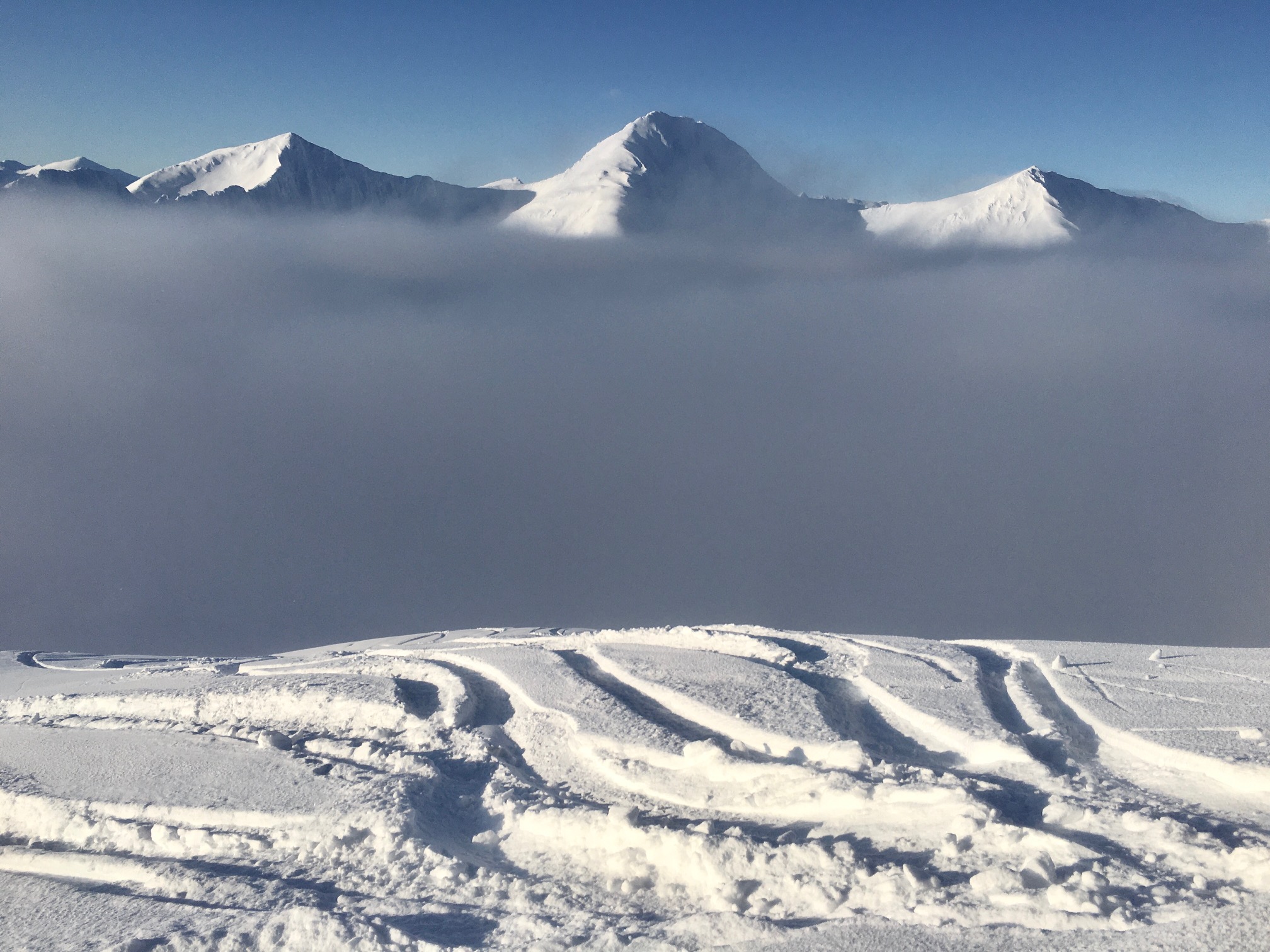Turnagain Pass
|
|
Today the avalanche danger is MODERATE in the Alpine. An increase in winds are forecast and triggering a fresh wind slab avalanche, composed of the loose snow from the storm on 1/20, is possible. Where wind has not had an affect, and below 2500′, the danger is LOW where concerns for human triggered loose sluff slides remain predictable in steep terrain. Any loose dry snow could quickly gain momentum and volume to take a rider off their feet, or potentially trigger a layer deeper within the snowpack.
SUMMIT LAKE: This region is just out of our advisory area to the south. The snowpack is shallow and extra caution is advised for triggering a slab avalanche in buried weak layers.

 Thick valley fog was over Turnagain Pass yesterday that extended from around 2,000′ to 3,000′. This photo was taken on Seattle Ridge and looking west toward Big Chief. 1.22.20.
Thick valley fog was over Turnagain Pass yesterday that extended from around 2,000′ to 3,000′. This photo was taken on Seattle Ridge and looking west toward Big Chief. 1.22.20.
